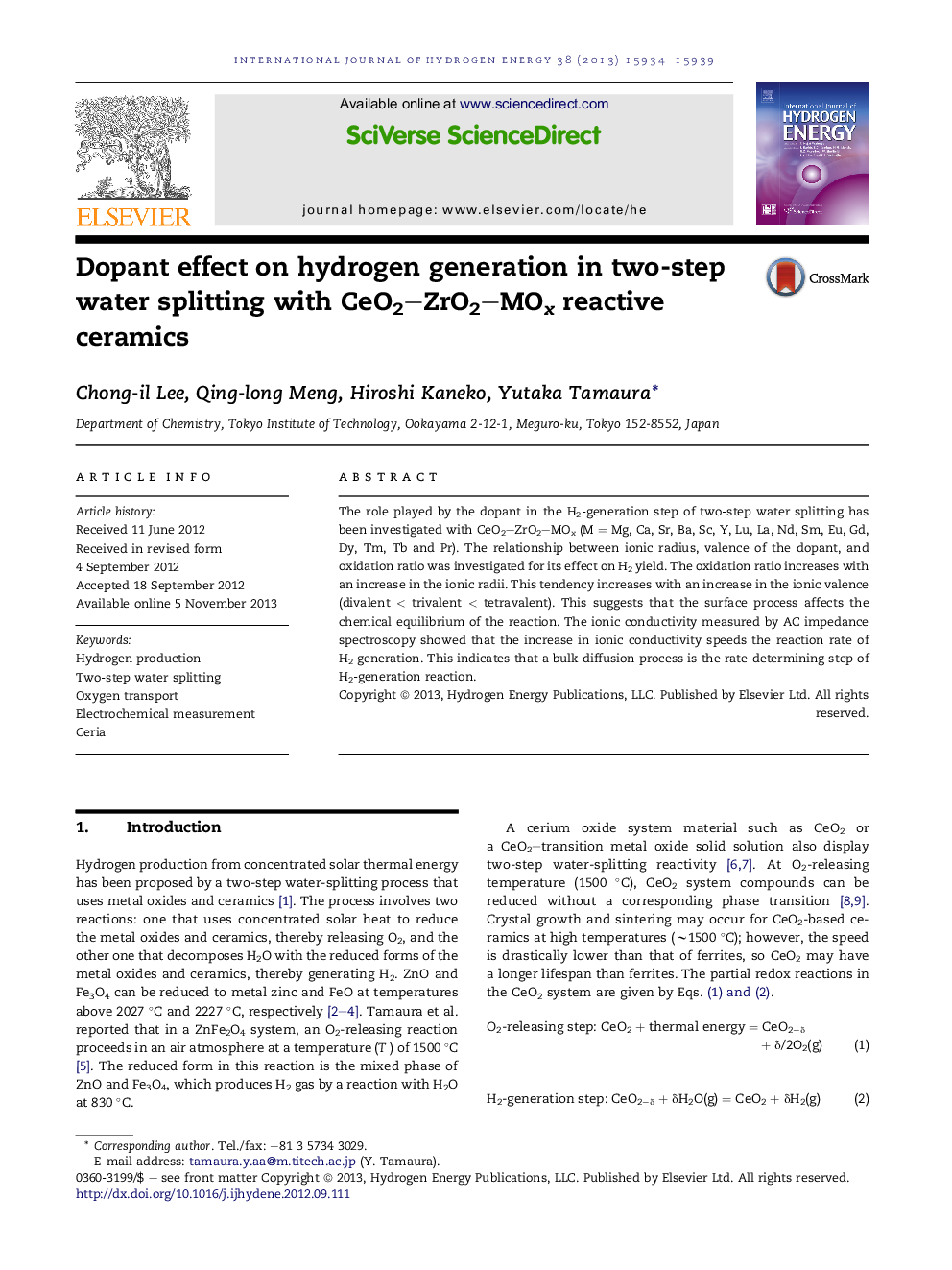| Article ID | Journal | Published Year | Pages | File Type |
|---|---|---|---|---|
| 1274153 | International Journal of Hydrogen Energy | 2013 | 6 Pages |
The role played by the dopant in the H2-generation step of two-step water splitting has been investigated with CeO2–ZrO2–MOx (M = Mg, Ca, Sr, Ba, Sc, Y, Lu, La, Nd, Sm, Eu, Gd, Dy, Tm, Tb and Pr). The relationship between ionic radius, valence of the dopant, and oxidation ratio was investigated for its effect on H2 yield. The oxidation ratio increases with an increase in the ionic radii. This tendency increases with an increase in the ionic valence (divalent < trivalent < tetravalent). This suggests that the surface process affects the chemical equilibrium of the reaction. The ionic conductivity measured by AC impedance spectroscopy showed that the increase in ionic conductivity speeds the reaction rate of H2 generation. This indicates that a bulk diffusion process is the rate-determining step of H2-generation reaction.
► We investigate dopant effect on the H2-generation step with CeO2–ZrO2–MOx. ► The oxidation ratio increases with an increase in the ionic radii of dopant. ► This tendency increases with an increase in the ionic valence. ► A bulk diffusion process affects the H2-generation reaction rate.
